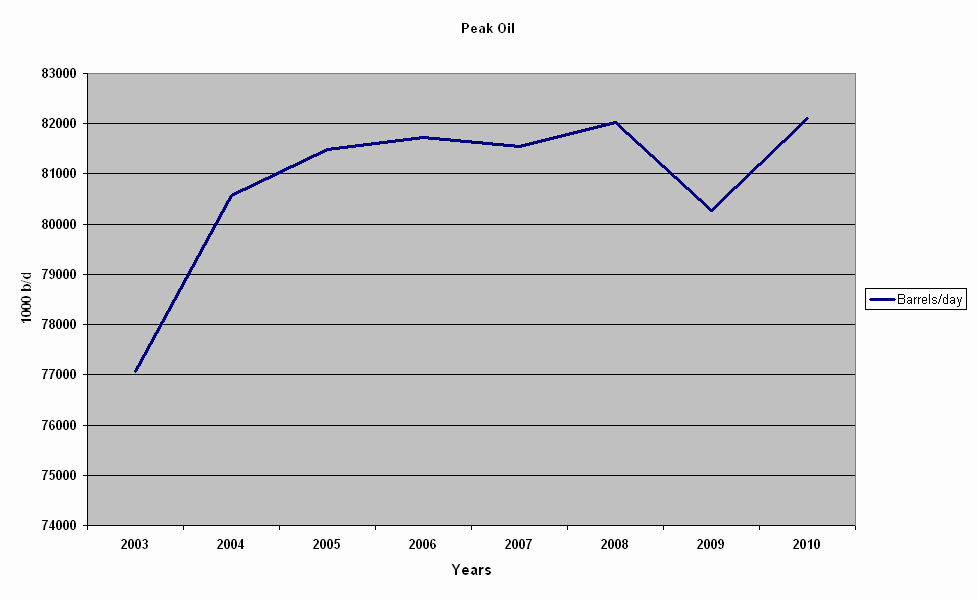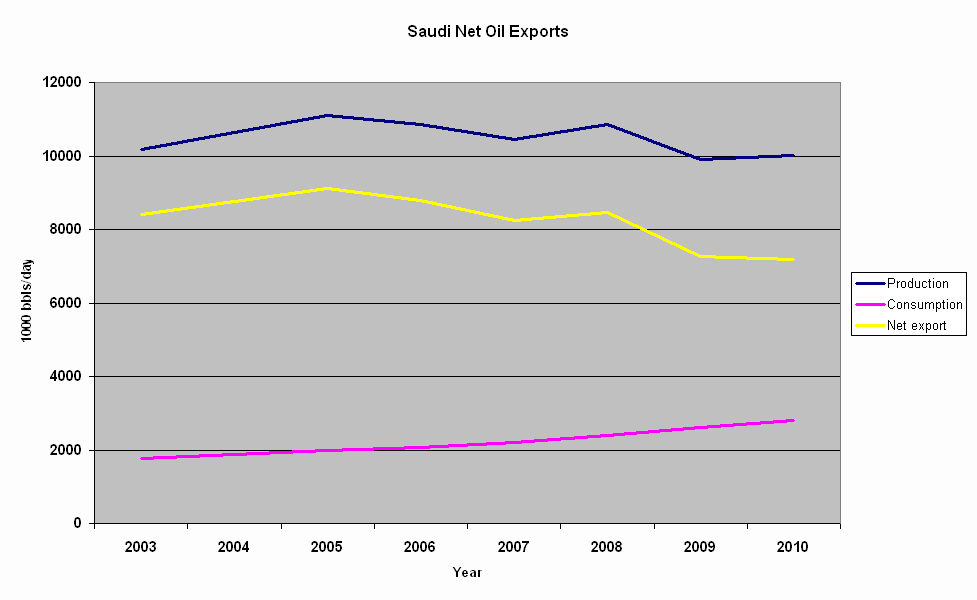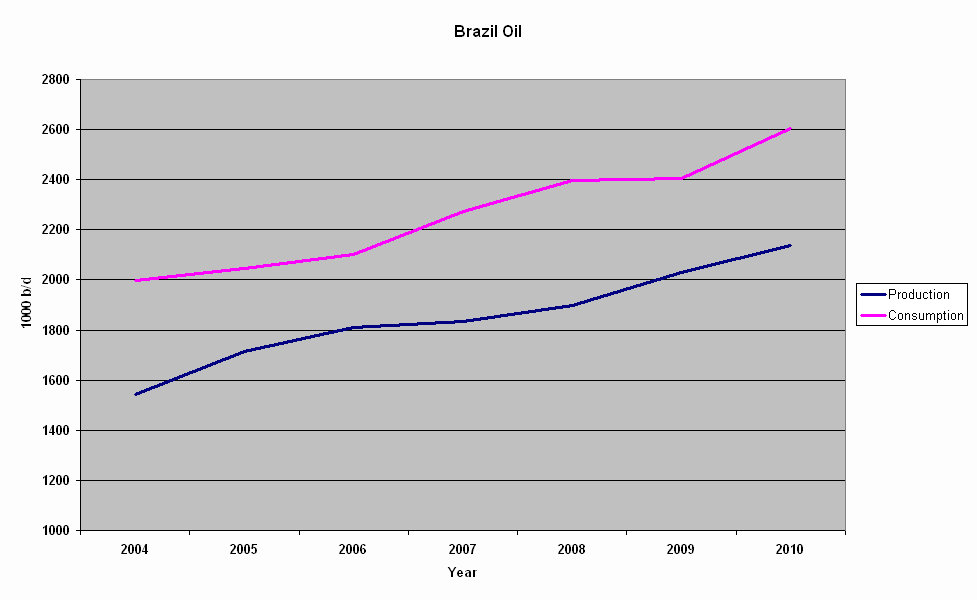
Has a global all-oils production peak passed?
All oils
BP publishes an annual "Statistical Review of World Energy". The 2011 review provides oil production figures from 1965 up to 2010. The figure "includes crude oil, shale oil, oil sands and NGLs (the liquid content of natural gas where this is recovered separately)".
Peak oil
Peak oil is concerned with actual production. The figures plotted below rely on industry estimates as expressed in the BP statistics, and although there are other sources, they are not readily available to an independent analyst. Some of the figures in the previous 2010 edition have been retrospectively revised.
Figure 1 Global oil production

| Year | 2003 | 2004 | 2005 | 2006 | 2007 | 2008 | 2009 | 2010 |
|
Barrels/day |
77075 | 80568 | 81485 | 81729 | 81544 | 82015 | 80278 | 82095 |
The change in 2009 over 2008 was -2.1%. Global oil production in 2009 was less than that in 2004. Production in 2010 was virtually the same as that in 2008, so it can be concluded that production has "plateaued" on its peak.
The peak oil detractors argue that Saudi production has been reduced to maintain its price and that 4 million barrels/day could be "swung" from spare capacity when demand returns. However, analysis of Saudi production and domestic consumption belies this claim.
Figure 2 Saudi net oil exports

| Year | 2004 | 2005 | 2006 | 2007 | 2008 | 2009 | 2010 |
| Production | 10638 | 11114 | 10853 | 10449 | 10846 | 9893 | 10007 |
| Consumption | 1880 | 1987 | 2065 | 2212 | 2390 | 2614 | 2812 |
| Net export | 8758 | 9127 | 8788 | 8237 | 8459 | 7269 | 7195 |
Peak production in Saudi was 11.114 million barrels a day in 2005, reducing to 10,007 million barrels/day in 2010, a reduction of 10.0% from 2005 to 2010. An increase of 4 million barrels a day from 9.893 million in 2009 is an increase of an incredible 40%. This does not seem feasible. Moreover domestic consumption continues to rise leaving only 7 million barrels/day for export.
Brazilian sub-sea exploration
Much has been made of the prospective oil production from off-shore Brazil, but Brazil is a net importer of oil and its domestic requirement is expected to rise with good economic prospects.
Figure 3

| Year | 2004 | 2005 | 2006 | 2007 | 2008 | 2009 | 2010 |
| Production | 1542 | 1716 | 1809 | 1833 | 1899 | 2137 | 2029 |
| Consumption | 1999 | 2033 | 2087 | 2258 | 2397 | 2405 | 2604 |
If Brazil's domestic consumption continues to rise without a corresponding increase in the rate of production, an increase in production from the pre-salt, off-shore wells will be needed to compensate for other declining fields, so the sub-sea production will at best simply fill Brazil's import/export gap.
Has a global all-oils production peak passed?
It is argued that there is no supply problem, simply a lack of demand. If demand returns, it will stimulate a rise in the oil price before production can be raised, which will in turn suppress the demand. Supply, demand and price are interactive parameters in a complex scenario, which reveals itself in a peak of production.
In the previous version it was argued that "It will take a year or two to be sure that a global all-oils peak in production was passed in 2009, but it does seem likely that it has." It appears that oil production is on its peak, but has not started its post-peak decline.
John Busby 16 July 2011 (Revised 16 July 2011)